
The seller refers to this truck as a COE but thanks to our reader Howard A we have all learned that is not a COE. Listed here on craigslist, and parked in Princeton, Illinois, is this 1952 GMC “Low Cab Forward” for $7,500.
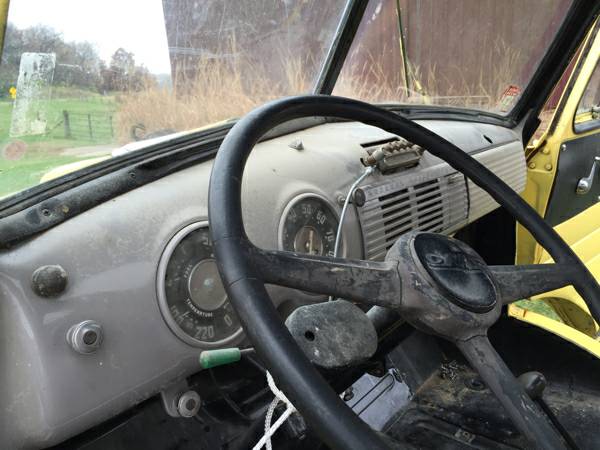
There appears to be an added pull rope to help in closing the driver’s door?
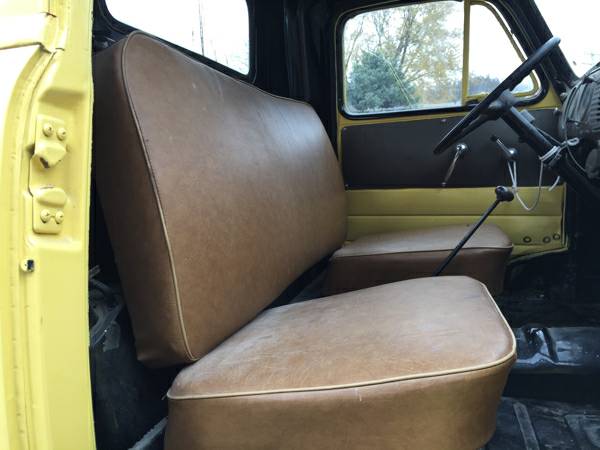
There is very little information given with the ad. We don’t know if this is a repaint and/or a re-upholstery?
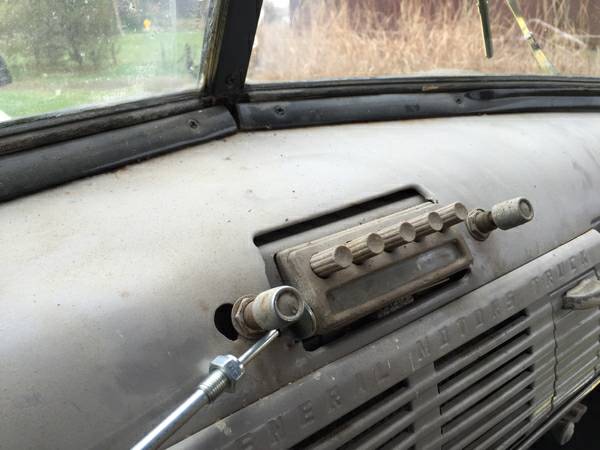
We don’t know the vintage of the radio? It appears to be “old”, but not factory.
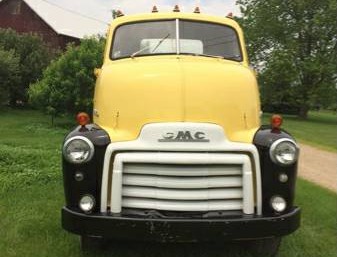
The GMC LCF does stand proudly in this field.
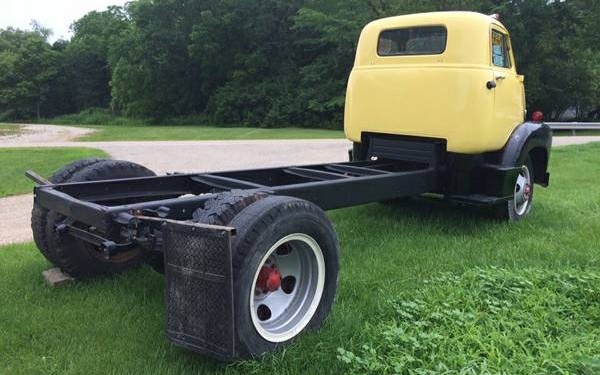
The seller says this truck is a barn find, has a 6 cylinder engine, a 4-speed and is all original and runs. This ’52 GMC does need brake work so you won’t be driving this rig home. Besides the brakes the new owner may need some new or recapped tires. If you are looking for a LCF from the ’50s, after you get your questions answered, this could be the one.
Motor-on,
Robert

This would be a LCF.
I live right down the road from this truck it’s amazing to see it on this site as I have been following for about a year now.
This GMC is a standard Cab Over Engine. It was a few years later that the Low Cab Forward designation came along as body builders make more specialized bodies for specific purposes.
Trying to post pic of LCF but its not working…
again…
I think the rope may be to keep the door from swinging too far open and denting the fender and or door. Nice truck.
Aw shucks, don’t want to stir up a hornets nest here. Truth be known, boxdin is right. Cabover and LCF were pretty much the same thing and it wasn’t until later, when semi trucks ( Freightliner, KW, Peterbilt, etc) with the all flat nose became the real cabovers and LCF became more like this.( below) The radio appears to be a early ’50’s Chevy car radio, upside down, so the speaker, which was attached to the top, would come out the dash opening. This is a great find, and somebody did a lot of work already on a clean original. Now THIS, would make a great candidate for a modern chassis and drivetrain. Oh, the rope is probably because the striker plate on the door jamb is worn, and the door won’t stay closed. Very common on old trucks, as the drivers door was used a million times. LCF truck: http://media.collectorcarpricetracker.com/auction_data/2014/5/25/310962581621/6.jpg
Well Howard, you are flat wrong on a few calls. The engine placement defines the truck model. The COE’s cabs are literally sitting on top of the engine, and engine access is through the cab. The LCF’s cabs are sitting approximately over half the engine, and engine access is under the hood AND through the cab. Additionally, COE’s were limited to class 6 and 7 GVW’s, but LCF’s also went to class 8. The class 8 trucks you mentioned (Freightliner, KW, Peterbilt) are ILT-CABS, not COE’s in the purist sense.
I am a journeyman master mechanic and current owner of a 1950 Ford F-6 COE, former sales engineer for International trucks, and a test driver/research engineer for PACCAR.
Gonna throw my 2 cents worth in here. This truck is NOT a LCF! In A LCF the foot well and seat are forward of the engine and cab profile is much lower. This is a COE, stub nose or even a bull nose.
And Howard A the pic you posted is still a COE, stub nose or bull nose. Again, in a LCF you will see the engine protruding out behind the cab. A good example of LCF’s are garbage trucks where you literally step out of the cab onto the ground, no running boards or steps to climb up.
Hmm, well, I’ll agree to disagree. Perhaps it’s a “regional dialect”. While this may not be a true LCF, it certainly is a “cab forward”, with “L” coming a bit later, as the doors and cab were lower than the Cab Forward. The garbage trucks you refer to, will always be a cabover to me. BTW, a “bull nose” refers to a mid 50’s KW cabover) ( thanks to flickr members for this)
https://www.flickr.com/photos/diedelsonkustoms/galleries/72157624215356428/
Ok everybody, I gotta eat crow on this one. I used Peterbilt/Kenworth definition of LCF. So I decided to get my Chevrolet /GMC service manuals and salesmans Truck Data Book out, and GM does use the moniker L. C. F. on the 5100 thru L80 series trucks. So, it all depends on the manufacturer. So in reality, it can be anything you damn well wanna call it, whether it’s a LCF, COE, BULL NOSE, STUB NOSE, SET BACK OR P.O.S.
I cannot find the plc I had yesterday, but some have taken the LCF concept a bit far;
This is a real one;
Hell, I’ll take one of those Minis!
I like this one…
Furthermore, in my reference book, it shows me that LCF was first used in 1955. 1955-1959; 5100 thru 9700. 1960; L50 thru L80. Prior to 1955 they used the suffix “S”
Thanks for checking on that, warren. I’m just an old, know nothing, know-it-all trucker. Now, we’ll never speak of this again. :)
The famous Mercedes race car transporters;
And the Chevy copy…
And a fav;
And to throw a nail in the gears, this was called a Cab “Under” truck.
Found some concepts
It all depended on the manufacturer. GM called them LCF while Ford and Dodge called them COE. Technically they were ALL cab over engine. Mechanics had other names for them.
Other than that, Mrs. Lincoln, how did you like the play? :)
I still say, Mrs. Lincoln, no ticket refunds…